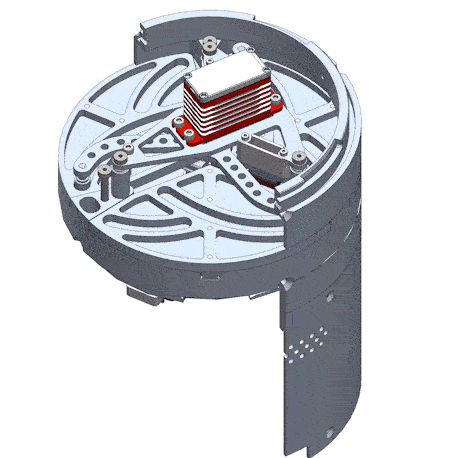GLASS AND CARBON FIBER FUSELAGE
We decided to implement glass and carbon fibers fuselages. This allows us to find a perfect harmony with our own hybrid engine.
| Length | 0 m |
| Diameter | 0 cm |
| Dry Mass without motor case | 0 Kg |
| Motor Model | FURIA |
| Max Thrust | 0 N |
| Target Apogee | 0 m |
We decided to implement glass and carbon fibers fuselages. This allows us to find a perfect harmony with our own hybrid engine.
In order to precisely reach the target apogee of 3000m, Gemini uses an air brakes system to precisely control its speed.
During the flight, three aerodynamic surfaces are extented from inside the fuselage, controlled by a complex control algorithm that is capable of predicting how high the apogee will be, based on measurements from the onboard sensors, thus adjusting the trajectory of the rocket in real time.

Differently from the previous systems that are based on centralized systems, we want to introduce modular systems on Gemini. Each board that made up the Deathstack, which, in previous projects, was the unique Electronics systems of reference, now is replaced with one or more boards that are smaller, easier to design and that solve determined tasks. Every subsystem will be organized in a Motherboard, different from each subsystem, that collects all the daughter-boards needed to accomplish all the tasks required.
Main motherboard: The main electronics, situated in the Electronic Bay manages different tasks like communicate with the ground station telemetry and video signals after and before the lift-off, acquires and elaborate data through sensors, drive servomotors in order to adjust the altitude with air-brakes, detect the apogee and trigger the expulsion of parachutes. Due to the big amount of job requested to the whole subsystem, a decent number of daughter-boards are placed on the Main Mother-Board.
Engine Motherboard: The engine electronics, placed between the tank and the combustion chamber, control the venting phase, the post-ignition and the engine shut-down. Everything is actuated by servo motors, and pressure sensors will be placed to monitor pressures on the tank.
Ground station Motherboard: Ground Station main usage is to manage the communications between ground and rocket, in order to collect and analyze data directly from the base station.
The Parafoil IPT designs, produces, and develops parafoil wing and software systems, safeguarding payloads and ensuring secure return to a specified point.
Our multidisciplinary team from various Skyward departments leverages diverse perspectives and expertise for optimal results.
The most important element of the Gemini recovery system is the main parachute. Due to the bigger mass of this year rocket, a more efficient shape is selected, the toroidal canopy. This allows to keep the size of the parachute within reasonable limits.
The toroidal shape is a novelty in the field, so little data about it are available, and an intensive literature review, followed by a scaled down wind test campaign is performed to understand the best configuration of the canopy.
At the end of this process, a canopy of 7 m2 is sewn by the team. This will allow to bring Gemini to a successful recovery after its mission.
In order to design the most suitable engine according with the mission requirements, an optimization software has been created. It finds the optimal grain parameters, quantity of oxidizer and number of injection holes with the purpose of obtaining the best trade-off between engine mass, total length and velocity at launchpad exit.